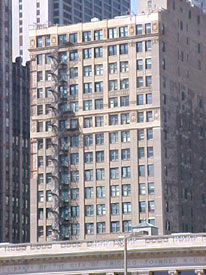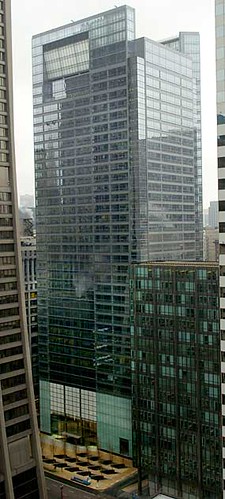Making lemonade out of lemon buildings, another idea for weaker market center cities with under-competitive office buildings -- office condos
 Chicago's Garland Building.
Chicago's Garland Building.Today's New York Times reports, in "Office Condos Tested in Chicago," about two projects, the Garland Building and 211 West Wacker. This is a way to take office space that is not in demand, or is in less demand compared to "Class A" and or newer buildings, and change the value perceptions. It also works to keep businesses located in the city, since they own the property, and it makes them more committed to staying.
Revitalizing the building stock is a conundrum for center city business districts. Tenants want all the latest conveniences, and it can be difficult to retrofit "old" buildings to provide such amenities. Building new provides everything that a tenant could want, but at a very high cost. Normally, when new buildings come on line, Class B and C buildings become worth even less. Reconceptualizing how these buildings are valued, by changing them to tenant ownership through the creation of office condominiums preserves and enhances value.
 New construction at One South Dearborn, Chicago. Photo from the Chicago Sun-Times article, "Creative camouflage at One South Dearborn."
New construction at One South Dearborn, Chicago. Photo from the Chicago Sun-Times article, "Creative camouflage at One South Dearborn."Index Keywords: urban-revitalization



0 Comments:
Post a Comment
<< Home